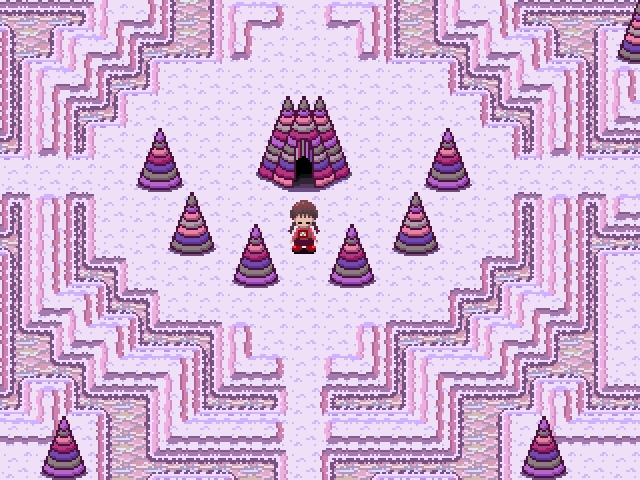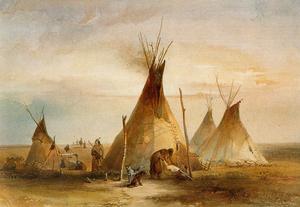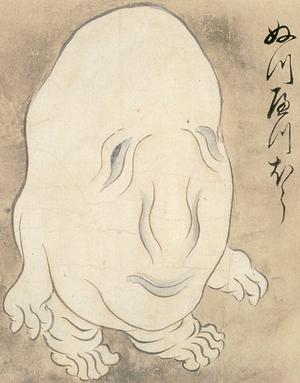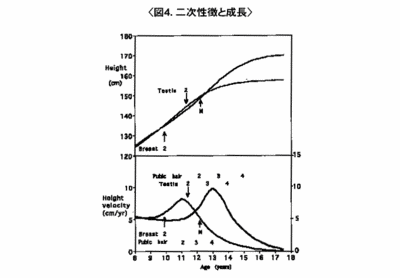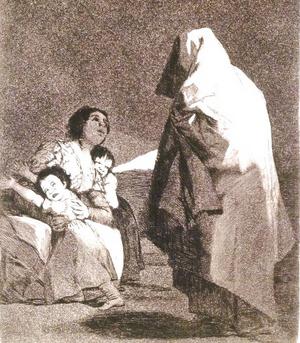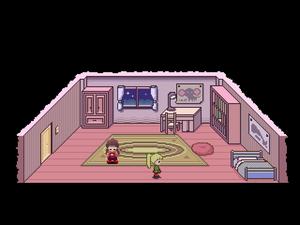>Mt.kiki No edit summary |
mNo edit summary |
||
| (24 intermediate revisions by 6 users not shown) | |||
| Line 1: | Line 1: | ||
[[File:Pastel.jpg|link=http://yumenikki.wikia.com/wiki/The_Pink_Sea|frame|left|The Pink Sea(Credobaptism)]] | [[File:Pastel.jpg|link=http://yumenikki.wikia.com/wiki/The_Pink_Sea|frame|left|The Pink Sea(Credobaptism)]] | ||
| Line 34: | Line 35: | ||
[[File:Sioux_tipi_Karl_Bodmer(1833).jpg|thumb|Sioux tipi, watercolor by Karl Bodmer, ca. 1833]] | [[File:Sioux_tipi_Karl_Bodmer(1833).jpg|thumb|Sioux tipi, watercolor by Karl Bodmer, ca. 1833]] | ||
==[[The Pink Sea]]([http://en.wikipedia.org/wiki/Tipi Tipi])== | ==[[Yume Nikki:The Pink Sea|The Pink Sea]]([http://en.wikipedia.org/wiki/Tipi Tipi])== | ||
[http://ja.wikipedia.org/wiki/%E3%83%86%E3%82%A3%E3%83%94%E3%83%BC#.E6.A6.82.E8.A6.81 <u>1 概要</u>] (1 Outline) | [http://ja.wikipedia.org/wiki/%E3%83%86%E3%82%A3%E3%83%94%E3%83%BC#.E6.A6.82.E8.A6.81 <u>1 概要</u>] (1 Outline) | ||
*[http://ja.wikipedia.org/wiki/%E3%83%86%E3%82%A3%E3%83%94%E3%83%BC#.E6.A7.8B.E9.80.A0 <u>1.1 構造</u>] (1.1 Structure) | *[http://ja.wikipedia.org/wiki/%E3%83%86%E3%82%A3%E3%83%94%E3%83%BC#.E6.A7.8B.E9.80.A0 <u>1.1 構造</u>] (1.1 Structure) | ||
| Line 56: | Line 57: | ||
<p class="toclevel-2 tocsection-4"><br /></p> | <p class="toclevel-2 tocsection-4"><br /></p> | ||
<p class="toclevel-2 tocsection-4">※TIPI MANNERS "If the door was open, friends(Madotsuki) simply walked in(Poniko's room)."?</p> | <p class="toclevel-2 tocsection-4">※TIPI MANNERS "If the door was open, friends([[Yume Nikki:Madotsuki|Madotsuki]]) simply walked in(Poniko's room)."?</p> | ||
<p class="toclevel-2 tocsection-4" style="text-align: center;"><u>01-052: TIPI MANNERS</u> (By Dorthea H. Calverley)</p> | <p class="toclevel-2 tocsection-4" style="text-align: center;"><u>01-052: TIPI MANNERS</u> (By Dorthea H. Calverley)</p> | ||
| Line 64: | Line 65: | ||
<p class="toclevel-2 tocsection-4">http://www.calverley.ca/Part01-FirstNations/01-052.html</p> | <p class="toclevel-2 tocsection-4">http://www.calverley.ca/Part01-FirstNations/01-052.html</p> | ||
==[[Poniko]]([http://en.wikipedia.org/wiki/Imaginary_friend Imaginary friend])== | ==[[Yume Nikki:Poniko|Poniko]]([http://en.wikipedia.org/wiki/Imaginary_friend Imaginary friend])== | ||
※With a Japanese person since Madotsuki calls it "駄目(dame)" and "無理(muri)" in Japanese? | ※With a Japanese person since Madotsuki calls it "駄目(dame)" and "無理(muri)" in Japanese? | ||
| Line 73: | Line 74: | ||
※Madotsuki in childhood, sometimes in [http://en.wikipedia.org/wiki/Adolescence <u>adolescence</u>], and rarely in [http://en.wikipedia.org/wiki/Adult <u>adulthood</u>]? | ※Madotsuki in childhood, sometimes in [http://en.wikipedia.org/wiki/Adolescence <u>adolescence</u>], and rarely in [http://en.wikipedia.org/wiki/Adult <u>adulthood</u>]? | ||
http://yumenikki.wikia.com/wiki/The_Pink_Sea(name)# | http://yumenikki.wikia.com/wiki/The_Pink_Sea(name)#Madotsuki.28.E8.A7.A3.E9.9B.A2.E6.80.A7.E5.90.8C.E4.B8.80.E6.80.A7.E9.9A.9C.E5.AE.B3.29 | ||
Imaginary friends are made often in childhood, sometimes in [http://en.wikipedia.org/wiki/Adolescence <u>adolescence</u>], and rarely in [http://en.wikipedia.org/wiki/Adult <u>adulthood</u>]. They often function as [http://en.wiktionary.org/wiki/tutelary <u>tutelaries</u>] when [http://en.wikipedia.org/wiki/Play_(activity) <u>played</u>] with by a child. They reveal, according to several theories of psychology, a child's [http://en.wikipedia.org/wiki/Anxiety <u>anxieties</u>], [http://en.wikipedia.org/wiki/Fear <u>fears</u>], [http://en.wikipedia.org/wiki/Goal <u>goals</u>] and [http://en.wikipedia.org/wiki/Perception <u>perceptions</u>] of the world through that child's [http://en.wikipedia.org/wiki/Conversation <u>conversations</u>].<sup class="Template-Fact" style="white-space: nowrap;">[''[http://en.wikipedia.org/wiki/Wikipedia:Citation_needed <u>citation needed</u>]'']</sup> They are, according to some children, physically indistinguishable from real people, while others say they see their imaginary friends only in their heads.<sup class="Template-Fact" style="white-space: nowrap;">[''[http://en.wikipedia.org/wiki/Wikipedia:Citation_needed <u>citation needed</u>]'']</sup> | Imaginary friends are made often in childhood, sometimes in [http://en.wikipedia.org/wiki/Adolescence <u>adolescence</u>], and rarely in [http://en.wikipedia.org/wiki/Adult <u>adulthood</u>]. They often function as [http://en.wiktionary.org/wiki/tutelary <u>tutelaries</u>] when [http://en.wikipedia.org/wiki/Play_(activity) <u>played</u>] with by a child. They reveal, according to several theories of psychology, a child's [http://en.wikipedia.org/wiki/Anxiety <u>anxieties</u>], [http://en.wikipedia.org/wiki/Fear <u>fears</u>], [http://en.wikipedia.org/wiki/Goal <u>goals</u>] and [http://en.wikipedia.org/wiki/Perception <u>perceptions</u>] of the world through that child's [http://en.wikipedia.org/wiki/Conversation <u>conversations</u>].<sup class="Template-Fact" style="white-space: nowrap;">[''[http://en.wikipedia.org/wiki/Wikipedia:Citation_needed <u>citation needed</u>]'']</sup> They are, according to some children, physically indistinguishable from real people, while others say they see their imaginary friends only in their heads.<sup class="Template-Fact" style="white-space: nowrap;">[''[http://en.wikipedia.org/wiki/Wikipedia:Citation_needed <u>citation needed</u>]'']</sup> | ||
==Madotsuki([http://ja.wikipedia.org/wiki/%E8%A7%A3%E9%9B%A2%E6%80%A7%E5%90%8C%E4%B8%80%E6%80%A7%E9%9A%9C%E5%AE%B3 解離性同一性障害])== | |||
== | |||
※Imaginary friends are the signs of Dissociative Identity Disorder? | ※Imaginary friends are the signs of Dissociative Identity Disorder? | ||
| Line 93: | Line 92: | ||
<p class="toclevel-3 tocsection-21">イマジナリーフレンド(イマジナリーコンパニオンとも)は座敷童と考えれば理解しやすい。 これは正常である。</p> | <p class="toclevel-3 tocsection-21">イマジナリーフレンド(イマジナリーコンパニオンとも)は座敷童と考えれば理解しやすい。 これは正常である。</p> | ||
<p class="toclevel-3 tocsection-21"> | <p class="toclevel-3 tocsection-21">If a household tutelary god is considered (imaginary companion), it will be easy to understand an imaginary friend.<br />This is normal.</p> | ||
</p> | |||
<p class="toclevel-3 tocsection-21"> | <p class="toclevel-3 tocsection-21"><br />幼児期には20%から30%もその体験を持つ者がいて一人っ子か女性の第一子に多い。</p> | ||
<p class="toclevel-3 tocsection-21">There are those who have the experience 20 to no less than 30% at infancy, and there are many to an only child or the first female child.</p> | <p class="toclevel-3 tocsection-21">There are those who have the experience 20 to no less than 30% at infancy, and there are many to an only child or the first female child.</p> | ||
<p class="toclevel-3 tocsection-21">※Madotsuki is | <p class="toclevel-3 tocsection-21">※Madotsuki is the woman of infancy(after the birth 1 years old ~ 6 years old or 7 years old) and is an only child?</p> | ||
<p class="toclevel-3 tocsection-21"> | <p class="toclevel-3 tocsection-21"><br /></p> | ||
<p class="toclevel-3 tocsection-21">2歳から4歳の間に生まれ、8歳ぐらいの間に消えてしまう<sup class="reference" id="cite_ref-148">[http://ja.wikipedia.org/wiki/%E8%A7%A3%E9%9B%A2%E6%80%A7%E5%90%8C%E4%B8%80%E6%80%A7%E9%9A%9C%E5%AE%B3#cite_note-148 <u>[99</u>]]</sup><sup class="reference" id="cite_ref-149">[http://ja.wikipedia.org/wiki/%E8%A7%A3%E9%9B%A2%E6%80%A7%E5%90%8C%E4%B8%80%E6%80%A7%E9%9A%9C%E5%AE%B3#cite_note-149 <u>[100</u>]]</sup><sup class="reference" id="cite_ref-150">[http://ja.wikipedia.org/wiki/%E8%A7%A3%E9%9B%A2%E6%80%A7%E5%90%8C%E4%B8%80%E6%80%A7%E9%9A%9C%E5%AE%B3#cite_note-150 <u>[101</u>]]</sup><sup class="reference" id="cite_ref-05-02_151-0">[http://ja.wikipedia.org/wiki/%E8%A7%A3%E9%9B%A2%E6%80%A7%E5%90%8C%E4%B8%80%E6%80%A7%E9%9A%9C%E5%AE%B3#cite_note-05-02-151 <u>[注 50</u>]]</sup>。</p> | <p class="toclevel-3 tocsection-21">2歳から4歳の間に生まれ、8歳ぐらいの間に消えてしまう<sup class="reference" id="cite_ref-148">[http://ja.wikipedia.org/wiki/%E8%A7%A3%E9%9B%A2%E6%80%A7%E5%90%8C%E4%B8%80%E6%80%A7%E9%9A%9C%E5%AE%B3#cite_note-148 <u>[99</u>]]</sup><sup class="reference" id="cite_ref-149">[http://ja.wikipedia.org/wiki/%E8%A7%A3%E9%9B%A2%E6%80%A7%E5%90%8C%E4%B8%80%E6%80%A7%E9%9A%9C%E5%AE%B3#cite_note-149 <u>[100</u>]]</sup><sup class="reference" id="cite_ref-150">[http://ja.wikipedia.org/wiki/%E8%A7%A3%E9%9B%A2%E6%80%A7%E5%90%8C%E4%B8%80%E6%80%A7%E9%9A%9C%E5%AE%B3#cite_note-150 <u>[101</u>]]</sup><sup class="reference" id="cite_ref-05-02_151-0">[http://ja.wikipedia.org/wiki/%E8%A7%A3%E9%9B%A2%E6%80%A7%E5%90%8C%E4%B8%80%E6%80%A7%E9%9A%9C%E5%AE%B3#cite_note-05-02-151 <u>[注 50</u>]]</sup>。</p> | ||
<p class="toclevel-3 tocsection-21"> | <p class="toclevel-3 tocsection-21">It will be born among 2 to 4 years old, and will disappear among about 8 years old.</p> | ||
</p> | |||
<p class="toclevel-3 tocsection-21">※Relevance with a gender identity which identity becomes rigid, around the ages of 5–7 years.</p> | |||
<p class="toclevel-3 tocsection-21"> | <p class="toclevel-3 tocsection-21">http://yumenikki.wikia.com/wiki/Restroom(name)#Restroom.28Gender_identity.29</p> | ||
<p class="toclevel-3 tocsection-21"> | <p class="toclevel-3 tocsection-21"><br /></p> | ||
<p class="toclevel-3 tocsection-21">イマジナリーフレンドを持つ子供は空想力が豊かであり、しばしば知性と創造性のしるしとみなされることもある<sup class="reference" id="cite_ref-152">[http://ja.wikipedia.org/wiki/%E8%A7%A3%E9%9B%A2%E6%80%A7%E5%90%8C%E4%B8%80%E6%80%A7%E9%9A%9C%E5%AE%B3#cite_note-152 <u>[102</u>]]</sup>。 これは病的な交代人格状態とははっきりと区別される<sup class="reference" id="cite_ref-153">[http://ja.wikipedia.org/wiki/%E8%A7%A3%E9%9B%A2%E6%80%A7%E5%90%8C%E4%B8%80%E6%80%A7%E9%9A%9C%E5%AE%B3#cite_note-153 <u>[103</u>]]</sup>。</p> | <p class="toclevel-3 tocsection-21">イマジナリーフレンドを持つ子供は空想力が豊かであり、しばしば知性と創造性のしるしとみなされることもある<sup class="reference" id="cite_ref-152">[http://ja.wikipedia.org/wiki/%E8%A7%A3%E9%9B%A2%E6%80%A7%E5%90%8C%E4%B8%80%E6%80%A7%E9%9A%9C%E5%AE%B3#cite_note-152 <u>[102</u>]]</sup>。 これは病的な交代人格状態とははっきりと区別される<sup class="reference" id="cite_ref-153">[http://ja.wikipedia.org/wiki/%E8%A7%A3%E9%9B%A2%E6%80%A7%E5%90%8C%E4%B8%80%E6%80%A7%E9%9A%9C%E5%AE%B3#cite_note-153 <u>[103</u>]]</sup>。</p> | ||
<p class="toclevel-3 tocsection-21">The child with an imaginary friend has rich imagination, and it may often be considered that he is a mark of intellect and creativity [102]. | <p class="toclevel-3 tocsection-21">The child with an imaginary friend has rich imagination, and it may often be considered that he is a mark of intellect and creativity [102].This is clearly distinguished from a morbid shift character state [103].</p> | ||
<p class="toclevel-3 tocsection-21">※"Lizard icon" of the Menu is a mark of intellect and creativity?</p> | |||
<p class="toclevel-3 tocsection-21">http://yumenikki.wikia.com/wiki/NASU(name)#NASU.28Hopi.27s_motif.29</p> | |||
<p class="toclevel-3 tocsection-21"><br /></p> | |||
<p class="toclevel-3 tocsection-21">『わかりやすい「解離性障害」入門』に4つの事例が報告されている<sup class="reference" id="cite_ref-154">[http://ja.wikipedia.org/wiki/%E8%A7%A3%E9%9B%A2%E6%80%A7%E5%90%8C%E4%B8%80%E6%80%A7%E9%9A%9C%E5%AE%B3#cite_note-154 <u>[104</u>]]</sup>。</p> | <p class="toclevel-3 tocsection-21">『わかりやすい「解離性障害」入門』に4つの事例が報告されている<sup class="reference" id="cite_ref-154">[http://ja.wikipedia.org/wiki/%E8%A7%A3%E9%9B%A2%E6%80%A7%E5%90%8C%E4%B8%80%E6%80%A7%E9%9A%9C%E5%AE%B3#cite_note-154 <u>[104</u>]]</sup>。</p> | ||
<p class="toclevel-3 tocsection-21"></p> | <p class="toclevel-3 tocsection-21"><br /></p> | ||
<p class="toclevel-3 tocsection-21">※"Madotsuki" calls it "駄目(dame)" and "無理(muri)" in Japanese, but "Poniko" is no Japanese who are a blue eye and blond hair, Bacause not friend (imaginary friend) on the mere imagination in a dream?</p> | |||
<p class="toclevel-3 tocsection-21"> | <p class="toclevel-3 tocsection-21">http://yumenikki.wikia.com/wiki/The_Pink_Sea(name)#Poniko.28Imaginary_friend.29</p> | ||
<p class="toclevel-3 tocsection-21"> | <p class="toclevel-3 tocsection-21">※Therefore, although it was a false friend(Uboa), Uboa(Nuppeppō) is made to look like a imaginary friend(Poniko)?</p> | ||
<p class="toclevel-3 tocsection-21">http://yumenikki.wikia.com/wiki/The_Pink_Sea(name)#Uboa.28Nuppepp.C5.8D.29</p> | |||
<p class="toclevel-3 tocsection-21">※"Poniko(imaginary friend & Nuppeppō)" showed as "Tipi" was left open and the friend (Madotsuki) was welcomed, "Madotsuki" is deceived?</p> | |||
<p class="toclevel-3 tocsection-21">http://yumenikki.wikia.com/wiki/The_Pink_Sea(name)#The_Pink_Sea.28Tipi.29</p> | <p class="toclevel-3 tocsection-21">http://yumenikki.wikia.com/wiki/The_Pink_Sea(name)#The_Pink_Sea.28Tipi.29</p> | ||
<p class="toclevel-3 tocsection-21"></p> | <p class="toclevel-3 tocsection-21"> | ||
</p> | |||
<p class="toclevel-3 tocsection-21">[[File: | <p class="toclevel-3 tocsection-21">[[File:Yumenikki(Uboa)|thumb|right|335 px|2008/05/28 "ウボァ" #1:00~1:07 Added by Alfonso E. Jaimes]]</p> | ||
==[[Events]]([http://en.wiktionary.org/wiki/darken_someone%27s_door darken someone's door])== | ==[[Yume Nikki:Events|Events]]([http://en.wiktionary.org/wiki/darken_someone%27s_door darken someone's door])== | ||
Alternative forms | Alternative forms | ||
*[http://en.wiktionary.org/wiki/darken_someone%27s_doorstep <u>darken someone's doorstep</u>], [http://en.wiktionary.org/wiki/darken_someone%27s_doorway <u>darken someone's doorway</u>] | *[http://en.wiktionary.org/wiki/darken_someone%27s_doorstep <u>darken someone's doorstep</u>], [http://en.wiktionary.org/wiki/darken_someone%27s_doorway <u>darken someone's doorway</u>] | ||
=== | ===Verb=== | ||
'''[http://en.wiktionary.org/wiki/darken <u>darken</u>] [http://en.wiktionary.org/wiki/someone <u>someone</u>][http://en.wiktionary.org/wiki/%27s <u>'s</u>] [http://en.wiktionary.org/wiki/door <u>door</u>]''' | '''[http://en.wiktionary.org/wiki/darken <u>darken</u>] [http://en.wiktionary.org/wiki/someone <u>someone</u>][http://en.wiktionary.org/wiki/%27s <u>'s</u>] [http://en.wiktionary.org/wiki/door <u>door</u>]''' | ||
#([http://en.wiktionary.org/wiki/Appendix:Glossary#idiomatic <u>idiomatic</u>]) To [http://en.wiktionary.org/wiki/arrive <u>arrive</u>] at the [http://en.wiktionary.org/wiki/entrance <u>entrance</u>] of someone's [http://en.wiktionary.org/wiki/residence <u>residence</u>] or of another building associated with that person, especially as an [http://en.wiktionary.org/wiki/unwelcome <u>unwelcome</u>] visitor. | #([http://en.wiktionary.org/wiki/Appendix:Glossary#idiomatic <u>idiomatic</u>]) To [http://en.wiktionary.org/wiki/arrive <u>arrive</u>] at the [http://en.wiktionary.org/wiki/entrance <u>entrance</u>] of someone's [http://en.wiktionary.org/wiki/residence <u>residence</u>] or of another building associated with that person, especially as an [http://en.wiktionary.org/wiki/unwelcome <u>unwelcome</u>] visitor. | ||
http://idioms.thefreedictionary.com/darken | http://idioms.thefreedictionary.com/darken | ||
| Line 147: | Line 156: | ||
''Fig.'' [for an unwelcome person] to come to someone's door seeking entry. (As if the visitor were casting a shadow on the door. Formal, or even jocular.) | ''Fig.'' [for an unwelcome person] to come to someone's door seeking entry. (As if the visitor were casting a shadow on the door. Formal, or even jocular.) | ||
※Since "Madotsuki" made the room obstinately dark ("darken a person's door") repeatedly, "Poniko" thought [for an unwelcome person]→Behavior of "Poniko" and an intimate friend was stopped (Don't [Never] darken my door again), and it was set to "Uboa | ※Since "Madotsuki" made the room obstinately dark ("darken a person's door") repeatedly, "Poniko" thought [for an unwelcome person]→Behavior of "Poniko" and an intimate friend was stopped (Don't [Never] darken my door again), and it was set to "Uboa" which is very angry of being. | ||
http://yumenikki.wikia.com/wiki/The_Pink_Sea(name)#Uboa.28Nuppepp.C5.8D.29 | http://yumenikki.wikia.com/wiki/The_Pink_Sea(name)#Uboa.28Nuppepp.C5.8D.29 | ||
| Line 154: | Line 163: | ||
<p class="toclevel-3 tocsection-21">[[File:Suushi_Nuppeppo.jpg|thumb|An ear and a nose are not like Uboa. ]]</p> | <p class="toclevel-3 tocsection-21">[[File:Suushi_Nuppeppo.jpg|thumb|An ear and a nose are not like Uboa. ]]</p> | ||
==[[Uboa]]([http:// | <p class="toclevel-3 tocsection-21"> | ||
</p> | |||
==[[Yume Nikki:Uboa|Uboa]]([http://ja.m.wikipedia.org/wiki/%E3%81%AC%E3%81%A3%E3%81%BA%E3%81%B5%E3%81%BB%E3%81%B5 ぬっぺふほふ])== | |||
絵巻には名前と絵があるに過ぎず、解説文の記述は一切ないためにどのような妖怪を意図して描かれたものかは想像の域を出ないが、その名前や、[http://ja.m.wikipedia.org/wiki/%E6%B4%92%E8%90%BD%E6%9C%AC <u>洒落本</u>]『新吾左出放題盲牛』(出版年不詳)に「ぬっぺっほうといふ化けもの有り、目もなく耳も無く」とあることから、[http://ja.m.wikipedia.org/wiki/%E3%81%AE%E3%81%A3%E3%81%BA%E3%82%89%E3%81%BC%E3%81%86 <u>のっぺらぼう</u>]の一種と見られている<sup class="reference" id="cite_ref-murakami_1-0">[http://ja.m.wikipedia.org/wiki/%E3%81%AC%E3%81%A3%E3%81%BA%E3%81%B5%E3%81%BB%E3%81%B5#cite_note-murakami-1 <u>[1</u>]]</sup><sup class="reference" id="cite_ref-kwai_2-0">[http://ja.m.wikipedia.org/wiki/%E3%81%AC%E3%81%A3%E3%81%BA%E3%81%B5%E3%81%BB%E3%81%B5#cite_note-kwai-2 <u>[2</u>]]</sup>。 | 絵巻には名前と絵があるに過ぎず、解説文の記述は一切ないためにどのような妖怪を意図して描かれたものかは想像の域を出ないが、その名前や、[http://ja.m.wikipedia.org/wiki/%E6%B4%92%E8%90%BD%E6%9C%AC <u>洒落本</u>]『新吾左出放題盲牛』(出版年不詳)に「ぬっぺっほうといふ化けもの有り、目もなく耳も無く」とあることから、[http://ja.m.wikipedia.org/wiki/%E3%81%AE%E3%81%A3%E3%81%BA%E3%82%89%E3%81%BC%E3%81%86 <u>のっぺらぼう</u>]の一種と見られている<sup class="reference" id="cite_ref-murakami_1-0">[http://ja.m.wikipedia.org/wiki/%E3%81%AC%E3%81%A3%E3%81%BA%E3%81%B5%E3%81%BB%E3%81%B5#cite_note-murakami-1 <u>[1</u>]]</sup><sup class="reference" id="cite_ref-kwai_2-0">[http://ja.m.wikipedia.org/wiki/%E3%81%AC%E3%81%A3%E3%81%BA%E3%81%B5%E3%81%BB%E3%81%B5#cite_note-kwai-2 <u>[2</u>]]</sup>。 | ||
| Line 162: | Line 174: | ||
[[File:Uboa.png|link=http://yumenikki.wikia.com/wiki/Uboa|frame|Uboa(There is "no body" in Uboa like Nuppeppō, it is "only a face", and even if compared with the picture,there are "not only a nose and an ear". ]]また妖怪研究家の[http://ja.m.wikipedia.org/wiki/%E5%A4%9A%E7%94%B0%E5%85%8B%E5%B7%B1 <u>多田克己</u>]は、のっぺらぼうは現在では顔に目鼻がまったくない妖怪として知られているが、古くはこのぬっぺふほふのように顔と体の区別のつかない形態のものだったとしている。<br /><br />Moreover, Katsumi Tada, the supernatural creature investigator, supposes that it was a thing of the form which distinction of a face and the body does not attach like [ it is old and ] this Nuppeppō, although Noppera-bō is known now as a supernatural creature who does not have the eyes and the nose in a face. | [[File:Uboa.png|link=http://yumenikki.wikia.com/wiki/Uboa|frame|Uboa(There is "no body" in Uboa like Nuppeppō, it is "only a face", and even if compared with the picture,there are "not only a nose and an ear". ]]また妖怪研究家の[http://ja.m.wikipedia.org/wiki/%E5%A4%9A%E7%94%B0%E5%85%8B%E5%B7%B1 <u>多田克己</u>]は、のっぺらぼうは現在では顔に目鼻がまったくない妖怪として知られているが、古くはこのぬっぺふほふのように顔と体の区別のつかない形態のものだったとしている。<br /><br />Moreover, Katsumi Tada, the supernatural creature investigator, supposes that it was a thing of the form which distinction of a face and the body does not attach like [ it is old and ] this Nuppeppō, although Noppera-bō is known now as a supernatural creature who does not have the eyes and the nose in a face. | ||
<p class="toclevel-3 tocsection-21"> | |||
</p> | |||
| Line 176: | Line 189: | ||
http://yumenikki.wikia.com/wiki/The_Pink_Sea(name)#The_Pink_Sea.28Tipi.29 | http://yumenikki.wikia.com/wiki/The_Pink_Sea(name)#The_Pink_Sea.28Tipi.29 | ||
Because "Uboa" became an intimate human being "friend(Poniko)" like "Nuppeppō (chlorosis)" and is cleared up? | Because "Uboa" became an intimate human being "friend(Poniko)" like "Nuppeppō(chlorosis)" and is cleared up? | ||
<p class="toclevel-3 tocsection-21"> | |||
</p> | |||
[[File:Battesimo_dei_neofiti_(restaurato).jpg|thumb|Baptism of Neophytes by Masaccio, 15th century, Brancacci Chapel, Florence.]] | |||
==The Pink Sea([http://en.wikipedia.org/wiki/Baptism Baptism])== | |||
Baptism (from the [http://en.wikipedia.org/wiki/Greek_language <u>Greek</u>] noun βάπτισμα baptisma; itself derived from βαπτισμός baptismos, washing<sup class="reference" id="cite_ref-LSJ.2B_2-0">[http://en.wikipedia.org/wiki/Baptism#cite_note-LSJ.2B-2 <u>[2</u>]]</sup>) is a [http://en.wikipedia.org/wiki/Christian <u>Christian</u>] [http://en.wikipedia.org/wiki/Rite <u>rite</u>] of [http://en.wikipedia.org/wiki/Initiation <u>admission</u>] (or [http://en.wikipedia.org/wiki/Adoption <u>adoption</u>]<sup class="reference" id="cite_ref-3">[http://en.wikipedia.org/wiki/Baptism#cite_note-3 <u>[3</u>]]</sup>), almost invariably with the use of water, into the [http://en.wikipedia.org/wiki/Christianity <u>Christian Church</u>] generally<sup class="reference" id="cite_ref-4">[http://en.wikipedia.org/wiki/Baptism#cite_note-4 <u>[4</u>]]</sup> and also a particular church tradition. Baptism has been called a [http://en.wikipedia.org/wiki/Sacrament <u>sacrament</u>] and an [http://en.wikipedia.org/wiki/Ordinance_(Christian) <u>ordinance</u>] of Jesus Christ. In some traditions, baptism is also called christening,<sup class="reference" id="cite_ref-5">[http://en.wikipedia.org/wiki/Baptism#cite_note-5 <u>[5</u>]]</sup><sup class="reference" id="cite_ref-6">[http://en.wikipedia.org/wiki/Baptism#cite_note-6 <u>[6</u>]]</sup> but for others the word "christening" is reserved for the [http://en.wikipedia.org/wiki/Infant_baptism <u>baptism of infants</u>].<sup class="reference" id="cite_ref-7">[http://en.wikipedia.org/wiki/Baptism#cite_note-7 <u>[7</u>]]</sup> | |||
※Supposing there is an intention that the "[http://yumenikki.wikia.com/wiki/Pink_Sea Pink Sea] is a baptism", | |||
the crime committed after Baptism(Pink Sea) , After it is having turned off the electricity of the Poniko's room(Madotsuki's sins) | |||
↓ | |||
※And the purple door in the snowy world is connected with the Pink(purple?) sea as a [http://en.wikipedia.org/wiki/Liturgical_colours Liturgical colours](Purple) of the faithful obtain [http://en.wikipedia.org/wiki/Divine_Mercy divine mercy] for the [http://en.wikipedia.org/wiki/Sin sins]([http://en.wikipedia.org/w/index.php?title=Sacrament_of_Reconciliation&redirect=no Sacrament of Reconciliation]) or the repentant character of [http://en.wikipedia.org/wiki/Lent Lent] ([http://en.wikipedia.org/wiki/Advent Advent]) from Poniko's house [[Yume Nikki:Poniko's House|Events]]? | |||
<p class="toclevel-3 tocsection-21"> | |||
</p> | |||
http://yumenikki.wikia.com/wiki/Snow_World(name)#Snow_World.28Sacrament_of_Reconciliation.29 | |||
[[File:Uboaroom.jpg|thumb|The height of Madotsuki is set to less than 150 cm if Uboa is Nuppeppō. | |||
]] | |||
==Uboa([http://en.m.wikipedia.org/wiki/Nuppepp%C5%8D Nuppeppō])== | |||
In Japanese folklore the '''Nuppeppō''' <span style="font-weight: normal;">(ぬっぺっぽう<sup>[http://en.m.wikipedia.org/wiki/Help:Installing_Japanese_character_sets <span class="t_nihongo_icon" style="font: bold 80%/normal sans-serif; padding: 0px 0.1em; color: rgb(0, 0, 238); text-decoration: none; font-size-adjust: none; font-stretch: normal;"><u>?</u></span>]</sup>)</span> (also known as '''Nuppefuhō''') is a [http://en.m.wikipedia.org/wiki/Y%C5%8Dkai <u>yōkai</u>] that is [http://en.m.wikipedia.org/wiki/Genderless <u>genderless</u>] and estimated to be up to 1.5m in height.<br /><br /> | |||
※"Uboa(Nuppeppō)" estimated to be up to 1.5m in height too?(Relation between height with Madotsuki, and age) | |||
http://yumenikki.wikia.com/wiki/The_Pink_Sea(name)#Madotsuki.28.E8.A7.A3.E9.9B.A2.E6.80.A7.E5.90.8C.E4.B8.80.E6.80.A7.E9.9A.9C.E5.AE.B3.29 | |||
[[File:Human_height.gif|thumb|400px|Copyright(C) 2007 Tanaka Growth Clinic All Rights ReserveSince 2007.6 ]] | |||
==Madotsuki([http://en.wikipedia.org/wiki/Human_height Human height])== | |||
※Since madotsuki which age understands from average height is a Japanese, it is taken from average height of Japan. | |||
思春期開始時期の平均身長は男性は約145cm、女性は約134.1cmで、思春期の身長の伸びのピークは男性は約13歳、女性は約10.88歳(10歳10ヶ月-10歳11ヶ月)でピーク時の女性の平均身長は約142.4cmである<sup class="reference" id="cite_ref-3">[http://ja.wikipedia.org/wiki/%E8%BA%AB%E9%95%B7#cite_note-3 <u>[3</u>]]</sup>。 | |||
[[File:Here_Comes_the_Bogey-Man.jpg|thumb|Goya's Que viene el Coco ("Here comes the bogeyman") c. 1797]] | |||
<p class="toclevel-3 tocsection-21"> | |||
</p> | |||
==Uboa([http://en.wikipedia.org/wiki/Bogeyman Bogeyman])== | |||
A '''bogeyman''' (also spelled '''bogieman''', '''boogeyman''' or '''boogieman''') is an amorphous imaginary being used by adults to terrorize children into submissive behaviour. | |||
Bogeyman tales vary by region. The bogeyman is usually a masculine entity but can be any gender or simply androgynous. | |||
[http://en.wikipedia.org/wiki/Bogeyman#Analogies_in_other_cultures <u>2 Analogies in other cultures</u>] | |||
*[http://en.wikipedia.org/wiki/Bogeyman#Sack_Man <u>2.1 Sack Man</u>] | |||
*[http://en.wikipedia.org/wiki/Bogeyman#El_Coco.2FCuco <u>2.2 El Coco/Cuco</u>] | |||
*[http://en.wikipedia.org/wiki/Bogeyman#Babau <u>2.3 Babau</u>] | |||
*[http://en.wikipedia.org/wiki/Bogeyman#Butzemann <u>2.4 Butzemann</u>] | |||
<p class="toclevel-3 tocsection-21">[[File:Uboa.png|thumb|The black point on a mouth look like nasal mucus?]]</p> | |||
<p class="toclevel-2 tocsection-7">In [http://en.wikipedia.org/wiki/Denmark <u>Denmark</u>] it is ''bussemanden'' or "Bøhmanden" (meaning "The Buhman"). It hides under the bed and grabs children who will not sleep. Like the English, it is also a slang term for nasal mucus.</p> | |||
*[http://en.wikipedia.org/wiki/Bogeyman#Other_examples <u>2.5 Other examples</u>] | |||
<p class="toclevel-2 tocsection-8">[[File:Ponikoroom.jpg|thumb|Poniko's room(his preference for hiding in dark places, like the "closet", under the "bed" of children or in forests at "night".)]]</p> | |||
[http://en.wikipedia.org/wiki/Germany <u>Germany</u>] - The Bogeyman is known as ''Der schwarze Mann'' (the black man). "Schwarz" does not refer to the colour of his skin (most Germans had never met a real black person during the time these legends developed) but to his preference for hiding in dark places, like the closet, under the bed of children or in forests at night. | |||
[[Category: | [[Category:Yume Nikki theoretical discussions by Mt.kiki]] | ||
Latest revision as of 02:36, 24 April 2023
The Pink Sea(Tipi)
1 概要 (1 Outline)
- 1.1 構造 (1.1 Structure)
- 1.2 解体・移動と設置 (1.2 Demolition and Movement, and Installation)
- 1.3 マナー・エチケット (1.3 Manner Etiquette)
ティピーでは、独自のエチケットが要求される。これは現在でも変わらない。
A tipee requires original manners.This does not change even now.
いきなりティピーに入ることはマナー違反である。
Going into a tipee suddenly is violation of manners.
入口の覆いが開いている場合は、友人ならそのまま入っても良い。
When the cover of the entrance is open, if it is a friend, you may enter as it is.
※TIPI MANNERS "If the door was open, friends(Madotsuki) simply walked in(Poniko's room)."?
01-052: TIPI MANNERS (By Dorthea H. Calverley)
If the door was open, friends simply walked in. If the curtain was dropped over the entrance, a person was expected to signal discretely that he was outside, then wait for an invitation. If the door flap was closed, and two sticks crossed in front of it, the tipi was more effectively locked than a hotel room with a dead-bolt lock, for no Indian would dream of entering.
http://www.calverley.ca/Part01-FirstNations/01-052.html
Poniko(Imaginary friend)
※With a Japanese person since Madotsuki calls it "駄目(dame)" and "無理(muri)" in Japanese?
Imaginary friends and imaginary companions are a psychological and social disorder where a friendship or other interpersonal relationship takes place in the imagination rather than external physical reality. Imaginary friends are fictional characters created for improvisational role-playing. They often have elaborate personalities and behaviors. They may seem real to their creators, though they are ultimately unreal, as shown by studies.[1] The first studies focusing on imaginary friends are believed to have been conducted during the 1890s.[2]
※Madotsuki in childhood, sometimes in adolescence, and rarely in adulthood?
Imaginary friends are made often in childhood, sometimes in adolescence, and rarely in adulthood. They often function as tutelaries when played with by a child. They reveal, according to several theories of psychology, a child's anxieties, fears, goals and perceptions of the world through that child's conversations.[citation needed] They are, according to some children, physically indistinguishable from real people, while others say they see their imaginary friends only in their heads.[citation needed]
Madotsuki(解離性同一性障害)
※Imaginary friends are the signs of Dissociative Identity Disorder?
解離性同一性障害(かいりせいどういつせいしょうがい、英: Dissociative Identity Disorder ; DID)は、解離性障害のひとつである。かつては多重人格障害(英: Multiple Personality Disorder ; MPD)と呼ばれていた[注 1]。
イマジナリーフレンド(イマジナリーコンパニオンとも)は座敷童と考えれば理解しやすい。 これは正常である。
If a household tutelary god is considered (imaginary companion), it will be easy to understand an imaginary friend.
This is normal.
幼児期には20%から30%もその体験を持つ者がいて一人っ子か女性の第一子に多い。
There are those who have the experience 20 to no less than 30% at infancy, and there are many to an only child or the first female child.
※Madotsuki is the woman of infancy(after the birth 1 years old ~ 6 years old or 7 years old) and is an only child?
2歳から4歳の間に生まれ、8歳ぐらいの間に消えてしまう[99][100][101][注 50]。
It will be born among 2 to 4 years old, and will disappear among about 8 years old.
※Relevance with a gender identity which identity becomes rigid, around the ages of 5–7 years.
http://yumenikki.wikia.com/wiki/Restroom(name)#Restroom.28Gender_identity.29
イマジナリーフレンドを持つ子供は空想力が豊かであり、しばしば知性と創造性のしるしとみなされることもある[102]。 これは病的な交代人格状態とははっきりと区別される[103]。
The child with an imaginary friend has rich imagination, and it may often be considered that he is a mark of intellect and creativity [102].This is clearly distinguished from a morbid shift character state [103].
※"Lizard icon" of the Menu is a mark of intellect and creativity?
http://yumenikki.wikia.com/wiki/NASU(name)#NASU.28Hopi.27s_motif.29
『わかりやすい「解離性障害」入門』に4つの事例が報告されている[104]。
※"Madotsuki" calls it "駄目(dame)" and "無理(muri)" in Japanese, but "Poniko" is no Japanese who are a blue eye and blond hair, Bacause not friend (imaginary friend) on the mere imagination in a dream?
http://yumenikki.wikia.com/wiki/The_Pink_Sea(name)#Poniko.28Imaginary_friend.29
※Therefore, although it was a false friend(Uboa), Uboa(Nuppeppō) is made to look like a imaginary friend(Poniko)?
http://yumenikki.wikia.com/wiki/The_Pink_Sea(name)#Uboa.28Nuppepp.C5.8D.29
※"Poniko(imaginary friend & Nuppeppō)" showed as "Tipi" was left open and the friend (Madotsuki) was welcomed, "Madotsuki" is deceived?
http://yumenikki.wikia.com/wiki/The_Pink_Sea(name)#The_Pink_Sea.28Tipi.29
Events(darken someone's door)
Alternative forms
Verb
- (idiomatic) To arrive at the entrance of someone's residence or of another building associated with that person, especially as an unwelcome visitor.
http://idioms.thefreedictionary.com/darken
darken someone's door Fig. [for an unwelcome person] to come to someone's door seeking entry. (As if the visitor were casting a shadow on the door. Formal, or even jocular.)
※Since "Madotsuki" made the room obstinately dark ("darken a person's door") repeatedly, "Poniko" thought [for an unwelcome person]→Behavior of "Poniko" and an intimate friend was stopped (Don't [Never] darken my door again), and it was set to "Uboa" which is very angry of being.
http://yumenikki.wikia.com/wiki/The_Pink_Sea(name)#Uboa.28Nuppepp.C5.8D.29
never darken your door again (old-fashioned)if you tell someone never to darken your door again, you mean you never want to see them again
Uboa(ぬっぺふほふ)
絵巻には名前と絵があるに過ぎず、解説文の記述は一切ないためにどのような妖怪を意図して描かれたものかは想像の域を出ないが、その名前や、洒落本『新吾左出放題盲牛』(出版年不詳)に「ぬっぺっほうといふ化けもの有り、目もなく耳も無く」とあることから、のっぺらぼうの一種と見られている[1][2]。
There are only a name and a picture in a picture scroll, since description of expository writing is absolutely none, do not go beyond the imagination of whether it is what meant what kind of supernatural creature and was drawn, but the name and 洒落本(Japanese book) "新吾左出放題盲牛" (publication year unknown) -- "ぬっぺっほうといふ化けもの有り、目もなく耳も無く (The ghost Nuppeppō was.it is, there are also no eyes and there is also no ear)" -- [1] currently believed to be a kind of Nuppeppō from a certain thing, and [2].
また妖怪研究家の多田克己は、のっぺらぼうは現在では顔に目鼻がまったくない妖怪として知られているが、古くはこのぬっぺふほふのように顔と体の区別のつかない形態のものだったとしている。
Moreover, Katsumi Tada, the supernatural creature investigator, supposes that it was a thing of the form which distinction of a face and the body does not attach like [ it is old and ] this Nuppeppō, although Noppera-bō is known now as a supernatural creature who does not have the eyes and the nose in a face.
顔に白粉をぬっぺりと塗った様を「白化」というが、この「白化」には「しらばっくれる、とぼける」「明け透けに打ち明けて言うと見せかけて騙す」「露骨になる」「白粉で装う」「白い化物」などの意味がある。
Although the appearance which applied face powder to the face with doping is called "chlorosis", this "chlorosis" has meanings, such as "it carries out, and pretends ignorance", "it pretending to reveal straightforwardly and to say and deceiving", "it becoming candid", "it being dressed with face powder", and "a white ghost."
その「白化」の意味の体現により、ぬっぺふほふはまず人間に成りすまして(しらばっくれて)通行人に近づき、親しげに会話をし(明け透けに打ち解け)、相手が油断したところで正体を現し(露骨になり)、本来の姿(白粉をべったり塗ったような白い化物)を見せるのだという[3]。
By body expression of the meaning of the "chlorosis", it approaches a passerby (carrying out) with ぬっぺふほふ first in the disguise of man, It talks friendly (being straightforwardly frank), true character of is shown in the place where the partner was inattentive (becoming candid), and it is said that a normal state of being (white ghost which applied face powder fast) is shown [3].
※"Poniko" left "Tipi" open (meaning that "a friend(Madotsuki)" may go into "Tipi").
http://yumenikki.wikia.com/wiki/The_Pink_Sea(name)#The_Pink_Sea.28Tipi.29
Because "Uboa" became an intimate human being "friend(Poniko)" like "Nuppeppō(chlorosis)" and is cleared up?
The Pink Sea(Baptism)
Baptism (from the Greek noun βάπτισμα baptisma; itself derived from βαπτισμός baptismos, washing[2]) is a Christian rite of admission (or adoption[3]), almost invariably with the use of water, into the Christian Church generally[4] and also a particular church tradition. Baptism has been called a sacrament and an ordinance of Jesus Christ. In some traditions, baptism is also called christening,[5][6] but for others the word "christening" is reserved for the baptism of infants.[7]
※Supposing there is an intention that the "Pink Sea is a baptism",
the crime committed after Baptism(Pink Sea) , After it is having turned off the electricity of the Poniko's room(Madotsuki's sins)
↓
※And the purple door in the snowy world is connected with the Pink(purple?) sea as a Liturgical colours(Purple) of the faithful obtain divine mercy for the sins(Sacrament of Reconciliation) or the repentant character of Lent (Advent) from Poniko's house Events?
http://yumenikki.wikia.com/wiki/Snow_World(name)#Snow_World.28Sacrament_of_Reconciliation.29
Uboa(Nuppeppō)
In Japanese folklore the Nuppeppō (ぬっぺっぽう?) (also known as Nuppefuhō) is a yōkai that is genderless and estimated to be up to 1.5m in height.
※"Uboa(Nuppeppō)" estimated to be up to 1.5m in height too?(Relation between height with Madotsuki, and age)
Madotsuki(Human height)
※Since madotsuki which age understands from average height is a Japanese, it is taken from average height of Japan.
思春期開始時期の平均身長は男性は約145cm、女性は約134.1cmで、思春期の身長の伸びのピークは男性は約13歳、女性は約10.88歳(10歳10ヶ月-10歳11ヶ月)でピーク時の女性の平均身長は約142.4cmである[3]。
Uboa(Bogeyman)
A bogeyman (also spelled bogieman, boogeyman or boogieman) is an amorphous imaginary being used by adults to terrorize children into submissive behaviour.
Bogeyman tales vary by region. The bogeyman is usually a masculine entity but can be any gender or simply androgynous.
In Denmark it is bussemanden or "Bøhmanden" (meaning "The Buhman"). It hides under the bed and grabs children who will not sleep. Like the English, it is also a slang term for nasal mucus.
Germany - The Bogeyman is known as Der schwarze Mann (the black man). "Schwarz" does not refer to the colour of his skin (most Germans had never met a real black person during the time these legends developed) but to his preference for hiding in dark places, like the closet, under the bed of children or in forests at night.

